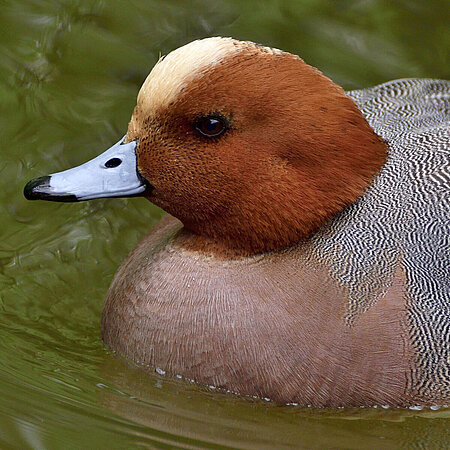Eurasian Wigeon
Mareca penelope

- Family
- Anatidae (Ducks, geese and swans)
- Weight
- 500 – 900 g
- Habitat
- Boreal wetlands with food-rich lakes and ponds
From nest building to breeding
The European wigeon’s nest is built by the female and is usually well hidden in tall grass or bushes. During incubation, the male remains near the female as she sits on the eggs. The chicks are precocial, meaning they leave the nest shortly after hatching together with their mum. The newly-hatched chicks are able to feed themselves, but remain under the watchful eye of their mum until they can fly.
A bird with many sounds
The Eurasian wigeon males have a distinctive call: a short, sharp, two to three-syllable whistling “whe-oo” call. In addition to swimming and feeding during the day, the wigeon is also active at night, when one can often hear their nocturnal calls. The sound generated by the wings in flight resembles high whistling.
The European wigeon is a gregarious bird that lives in large colonies with over a thousand individuals during winter.
Distribution
